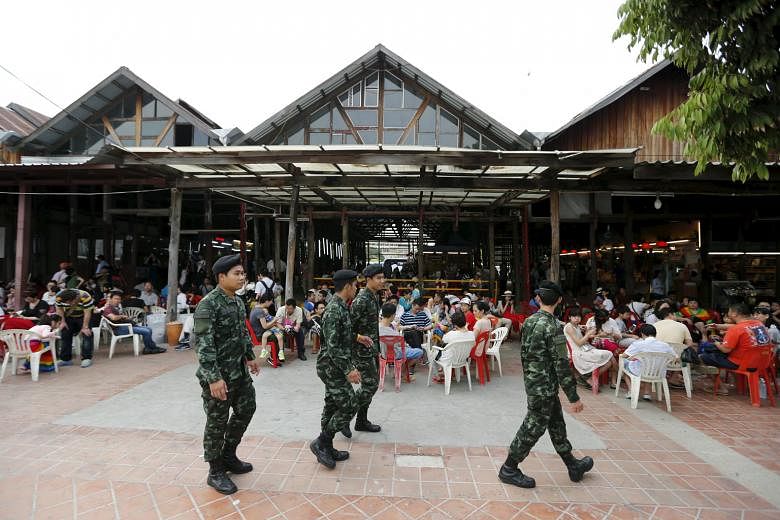BANGKOK • The perpetrators of last year's deadly explosion at a Bangkok shrine originally chose a pier packed with Chinese tourists as their primary target and had amassed enough chemicals to make 10 more equally powerful bombs, the chief of Thailand's police bomb squad has said.
A bomb planted at the Erawan Shrine on Aug 17 killed 20 people and turned the popular tourist site into a scene of carnage. Another device, which was left at a crowded pier on Bangkok's Chao Phraya River, but failed to explode, might have inflicted much greater casualties, said a leading security analyst.
Bomb squad chief Kamthorn Auicharoen's disclosures bolster a widely held theory that the perpetrators of the shrine bombing were trying to kill Chinese tourists.
The Thai police have maintained that the motive for the Erawan bombing was Thailand's earlier crackdown on human smuggling networks. But many analysts, diplomats and even Thai officials say the bombing was likely an act of revenge for Thailand's deportation to China of more than 100 Uighur Muslims in July.
Acknowledging that Chinese tourists were intentionally targeted could dent one of Thailand's biggest industries. A record 7.9 million Chinese, or more than a quarter of the total 28 million tourists, visited the kingdom last year.
Thai police have uncovered evidence in the shrine bombing that points to a large and well-organised network, according to experts and documents reviewed by Reuters.
Dangerous chemicals and other materials discovered in Bangkok apartments connected to two suspects could have made 10 more bombs, said Colonel Kamthorn.
Yusufu Mieraili and Adem Karadag, the two suspects arrested last year by Thai police, are Uighur Muslims from China's restive Xinjiang region. They appeared in a Bangkok military court on Feb 16 to hear 10 charges against them, including murder and illegal possession of explosives. Both men say they are innocent.
Police have issued arrest warrants for 15 other suspects, many of whom are thought to be Turkish or in Turkey.
The military indictment accuses the men of planting the first bomb at the Chao Phraya Princess Pier, where hundreds of Chinese tourists gather each day to board dinner cruises along the river.
It failed to detonate and, after two or three hours, was taken away by a blue-shirted figure later identified in an arrest warrant as an "Asian man". He was then caught on security cameras further upriver, kicking a bag thought to contain the bomb into the water. It exploded harmlessly the next day.
The Erawan Shrine bomb went off at around 7pm on Aug 17, killing mostly Chinese or ethnic Chinese tourists. Col Kamthorn believes the shrine bombing "might not have happened" had the bomb at the pier functioned.
Assuming it was a target on Aug 17, the pier would "certainly make sense" because it caters almost exclusively to tour groups mainly from China, said Mr Anthony Davis, a Bangkok-based analyst at security consulting firm IHS-Jane's.
"Casualties would almost certainly have been significantly higher and overwhelmingly from mainland China," he said.
REUTERS

